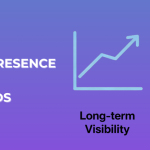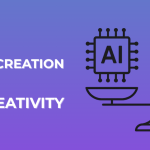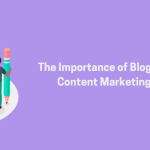Table Of Content
You’ve probably come across this SEO periodic table already and thought to yourself – “Oh, isn’t this something from my chemistry class back in the days?”
And you’re not wrong. Just like the original periodic table organizes chemical elements, this one organizes the essential parts of SEO.
The table was first introduced back in 2011, by Search Engine Land. Fast forward to 2025, we, now, have the 7th edition of the same. That’s over a decade of updates and tweaks to match how search engines – and people managing it – actually works.
But here’s the thing.
Even after all these years, lots of webmasters and SEO managers still find it a little confusing. After all, there are boxes, codes, categories everywhere – which makes the entire thing somewhat difficult to understand at first.
So, we have decided to keep the technicalities aside and simplify the topic to make it make sense to our readers. This guide will also help you get a solid grip on what these on-page SEO factors really mean – and how you can use them to your advantage.
So, let’s begin.
A: What Is The SEO Periodic Table?

Source: Search Engine Land
The periodic table, now in its 7th edition for 2025, is a visual guide which clarifies SEO and its shenanigans even more. Search Engine Land has specifically designed it to help marketers and designers understand what truly matters to improve their online visibility.
Think of it like this: just as the chemistry periodic table organizes elements by their characteristics, this one groups essential SEO ranking factors into categories.
Each of these groups focuses on a different aspect of SEO – like content, credibility, links, user experience, and more. So, if you are feeling overwhelmed with updates and algorithms, don’t worry. This updated table will help you understand what’s changed and what’s not.
B: Who Is This SEO Periodic Table For?
Honestly, SEO is a massive ground to understand and cover, especially for the newbies. And considering how quickly it keeps on changing, the trends can be much more difficult to keep up with. So, this version of SEO periodic table exists to simplify it all for beginners.
It Can Also Be Helpful For –
- Content writers/creators (who want a visual refresh of the basics and want to rank their content higher on the search engines).
- Website owners (who manage their own websites).
- Marketing teams (who need to align strategy with results).
It breaks the whole SEO process into manageable chunks – on-page, off-page, technical, user experience, and many more. In some cases, the table can also be an ideal guide for experienced SEOers who want to stay updated with the recent changes and modifications.
C: The Anatomy Of The SEO Periodic Table
The SEO periodic table is organized into 7 main sections, which are also known as core elements. Here’s what you need to know about them:
I. Credibility
Credibility is the heart and soul of the SEO periodic table. And it’s firmly rooted in Google’s E-E-A-T principles, which denote to – experience, expertise, authoritativeness, and trust.
Why does it matter, though?
Because search engines are getting smarter every day at judging who really knows their stuff and who’s just bluffing. They look at the author’s experience, expertise, and the trustworthiness of your brand and content. In 2025, the introduction of AI and other algorithms has made credibility much more important.
There Are Two Important Sub-Elements Of Credibility, Including –
- Brand: This isn’t just your tagline or the logo you are using. It’s your online presence, reputation, and how people perceive you across the web.
- Creator: Verified authorship and transparency matter in this aspect, too. When Google knows who’s behind the content – and trusts them – it improves your SEO even more.
II. Content
Content continues to be the single most crucial element in the SEO periodic table. However, in 2025, the game has changed to some extent. The focus, now, has shifted more towards authenticity, AI content detection, and putting users first, always.
This means it’s not about throwing keywords on a page anymore. It’s about creating real value that people and search engines can trust. So, let’s learn a little more about it –
- Answer (An): Your content must directly meet the search intent. Don’t make your readers guess what you might be talking about – give them what they came for.
- Accuracy (Au): Before you include any data on your content, fact-check everything. Misinformation is a big no-no and can damage your website’s trust.
- Consensus (Cn): Your content should align with what top, authoritative sources are saying about the topic, especially in sensitive or technical niches.
- Language (L): You need to adapt your tone and style to match your target audience. Know who you are talking to and structure your content for them only.
- Quality (Qu): Quality over quantity – this notion still reigns supreme. And deep, rich, and genuinely useful content wins the game every time.
- Relevance (R): Your content should answer what a reader might be asking or searching for. If users have to keep searching after finding your blog, you missed the mark.
- Value (V): As a writer, you need to prioritise helping readers more than trying to please search engines. Write content for people, not bots.
- Depth (Dt): Long-form, expert content often outperforms shallow articles. So, you’ve got to go deeper, research more, & make sure your content is answering everything.
- Multimedia (Mm): If you want to make your article more fun and engaging to read, you may try to mix it up with videos, infographics, and images.
- Keywords (Kw): Use whatever words you are using carefully. If you end up stuffing your keywords everywhere, your blog is bound to get flagged by search engines.
- Freshness (Fr): Keep on updating your content timely manner and with brand-new information. Old information can affect the quality of the article.
- Uniqueness (U): While writing articles, you need to offer distinct angles or insights to make the content fresh and stand out from the crowd.
III. User
In 2025, user experience takes center stage over everything else. And the 7th version of the SEO periodic table reflects this shift clearly. Google now puts a big emphasis on search satisfaction metrics. If users aren’t happy, your rankings will feel the heat.
In this section, we will explain how you can make your website genuinely helpful and easy to use. So, let’s break down the sub-elements of this one as well –
- Accessible: Your website should be inclusive. That means you have to follow the WCAG guidelines so everyone, regardless of ability, can use your website without hassle.
- Intent: Also, you have to match your content closely with what users want to accomplish. Try to understand their goals and deliver that precisely.
- Interactions: Keep your website visitors engaged with a smooth, intuitive UI and UX. A confusing-looking website won’t keep users for long.
- Locality: Geo-targeting matters more than ever. So, it’s important to tailor your content and SEO to the local audience you’re trying to reach.
- Satisfaction: Don’t just meet the expectations of your users – exceed them in any way you can. Delight them in such a way so they can keep coming back.
- Task Completion: The ultimate goal of your website is to help users achieve what they came for. Whether it’s finding info, making a purchase, or signing up – make it easy.
If you want a solid SEO structure for websites in 2025, focusing on the user experience is non-negotiable. After all, happy users = happy search engines.
IV. Code
The backend of the website isn’t really the flashy part of it at all. However, it’s the unsung hero of SEO success. The SEO periodic table gives special importance to code-based optimisation because, without a solid foundation, even great content can fall flat.
Think of this section as a cleanup crew and stage manager rolled into one. It keeps things running smoothly behind the scenes so your content shines front and centre.
Here Are The Key Practices To Focus On:
- Title Tags With Keywords: Simple yet powerful – a well-placed keyword in your title tag can influence SEO ranking factors in a massive way.
- Effective Meta Description: These won’t directly boost rankings, but they sure help click-through rates. So, try to make ’em punchy and to the point.
- Structured headings (H1, H2, H3): These guide both readers and search engines. Structure equals clarity, and clarity ranks.
- Image Alt Text: It’s not just about accessibility—it also gives Google more context about your content.
- Schema Markup: Want those rich results in search listings? Schemas are your best friend. From FAQs to recipes to reviews, mark it up!
V. Links
Links still pack a punch in 2025, but the game has evolved a little bit. The focus has shifted from just “getting backlinks” to earning meaningful trust signals. In fact, brand mentions and relevance now play a huge role in how Google interprets link value.
That’s why the SEO periodic table treats links as a key ranking factor. But here’s the catch – it’s not about quality anymore. It has to be of high quality or nothing.
Let’s Explore Its Sub-Elements Too –
- Inbound Links: These are natural backlinks from high-authority websites. When top-tier sites link to yours, it signals credibility and trust.
- Internal Links: These help both users and search engines to navigate your website better. A clear, logical structure connects your content in a way that makes sense.
- External Links: Pointing to reputable sources isn’t just good manners – it adds value. It shows you’ve done your homework and care about the user experience.
In the world of modern SEO ranking factors, smart link strategies act like vote-builders for your website. Just remember, one powerful link is worth more than a dozen spammy ones.
VI. Performance
Speed isn’t just nice – it’s necessary for every website. In 2025, performance remains a cornerstone of every well-optimized site. Whether you’re aiming for higher rankings or better conversions, you cannot ignore page performance anymore.
The SEO periodic table puts performance in the spotlight for a good reason. But which parts of the system it wants us to focus on more than the others?
- Page Speed: Honestly, I don’t like waiting for a page to load and let me read whatever I came to learn, and I’m sure none of your readers want that either. So, make sure that your website opens within two seconds of clicking.
- Responsiveness: Every tap, scroll, and swipe on your website should feel crisp and instant – whether your users are on their mobile, desktop, or mobile.
- Visual Stability: Have you ever had a button jump on your website when you’re about to click on it? That’s called layout shift – and it’s quite frustrating for a user. So, you can use a CLS metric to measure and prevent it accordingly.
VII. Architecture
Think of architecture as the skeleton of your website – it holds everything together.
In 2025, it’s even more critical with AI bots crawling smarter, Google’s mobile-first indexing fully rolled out, & search engines getting better at understanding meaning, not just keywords.
The SEO periodic table places architecture at the core of modern site health. Why? Because if your site isn’t structured right, no amount of content or links will save it.
Let’s break down the key sub-elements:
- C – Crawl: Search engines, like Google, need access. So, be sure to use clear sitemaps and a well-structured robots.txt to guide them.
- Mo – Mobile First: Design your website in a mobile-friendly manner and index the same accordingly. If it doesn’t open on your readers’ phones, you’ll lose a lot of traffic.
- PS – Page Structure: Including headlines in your article along with offering a clean and fresh visual flow can help users and bots navigate your website with ease.
- Pr – Parity: Your website’s mobile and desktop version should mirror each other in terms of both content and experience.
- Ur – URLs: Keep your URLs short, readable, and keyword-friendly. If you want to add canonical URLs, then go ahead with it, too. This will help you tackle duplicates.
- Ps – HTTPS: Still a ranking factor. Still essential for user trust. There’s really no excuse not to have it by now.
- P – Pagination: If you are writing long posts on your website, make sure to split them smartly, either with proper rel tags or an infinite scroll that helps with indexing.
- Ta – Taxonomy: Organize content using categories, topic clusters, and pillar pages. Don’t let your site turn into a content jungle.
- Ca – Canonicalize: Use canonical tags to tell Google which version of a page is the real deal. It keeps your ranking signals focused.
Creating a solid site architecture for your website reflects SEO best practices and powers a scalable, clean SEO structure for website. Once it’s done right, everything else runs smoother.
And That’s A Wrap!
Given these points, it is important to realise the effectiveness of the SEO period table. This information allows marketers and businesses to develop a clear strategy for higher rankings.
So, What Do You Like The Most About This SEO Periodic Table? If Not Realised, See Here:
- The periodic table layout helps with a full view of essential elements for SEO strategies. In fact, it aids in spotting areas for improvement and taking a complete approach.
- Visual design makes grasping and remembering elements and their connections easier, which is great for visual learners.
- It helps identify SEO trends quickly, like ranking changes or search engine updates, keeping marketers updated.
- The SEO periodic table saves time and effort by putting all the key info in one place, giving marketers a quick overview without needing multiple resources.
That’s it. Make the most of this SEO periodic table, and if you need free SEO consultation, reach out to us.








